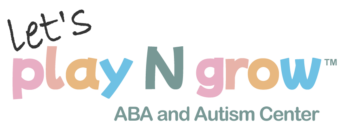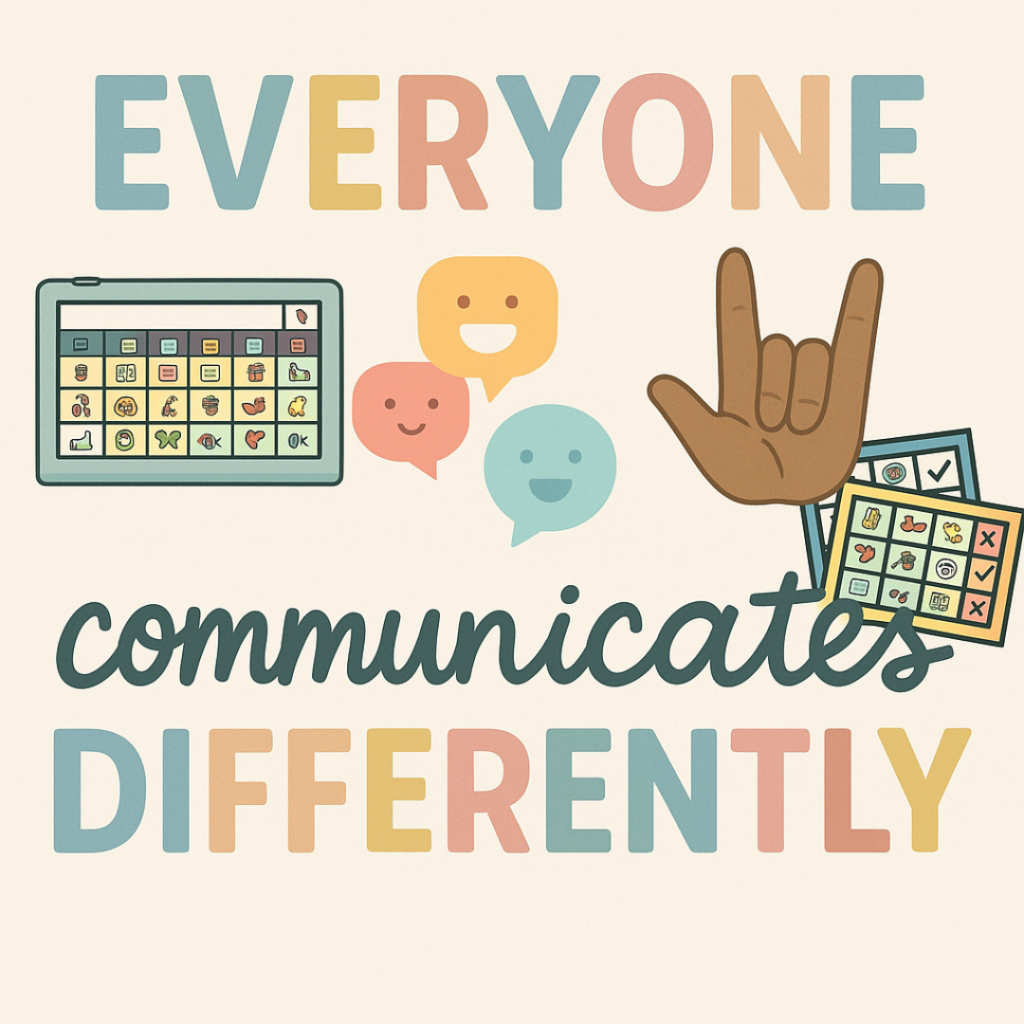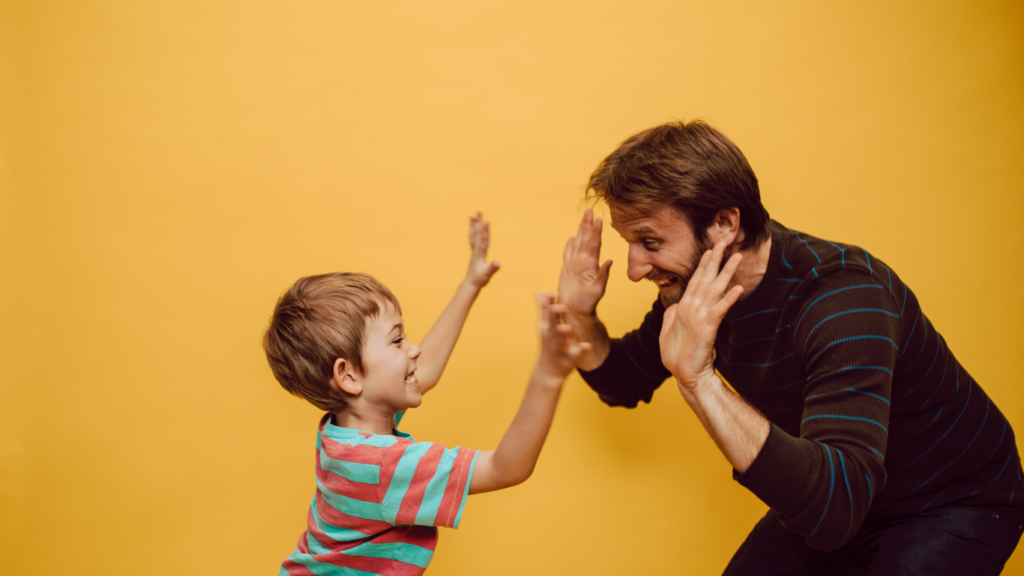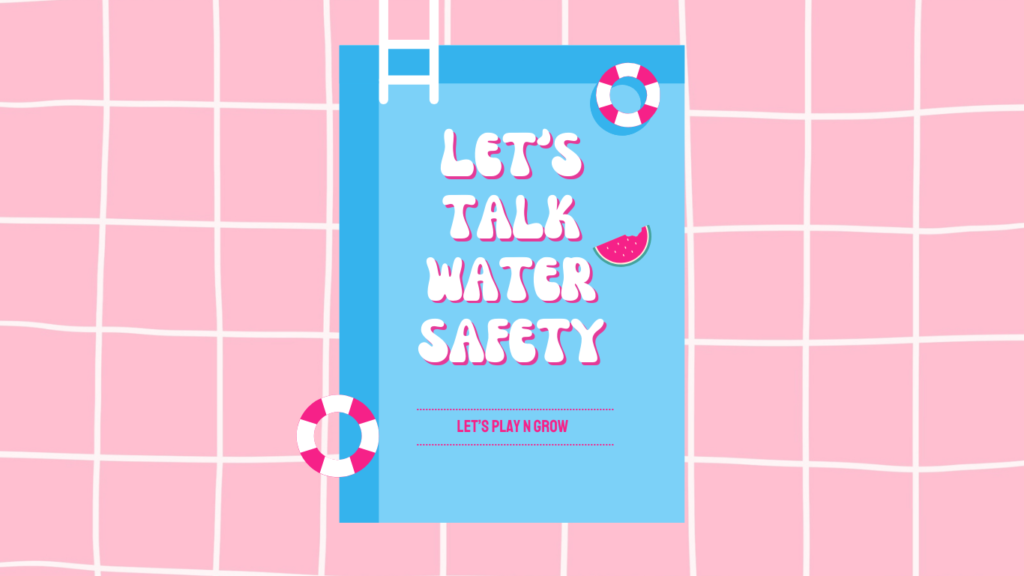Parents’ Resources
Blog Posts
How ABA Supports Communication in Children with Autism
If you’ve ever wondered when your child might say their first word—or if they ever…
A Parent’s Guide to Positive Reinforcement
How to stop saying “no” all day and start building the behaviors you actually want…
ABA Therapy 101: What You Need to Know Before Getting Started
If your child was recently diagnosed with autism, you’ve probably heard the term ABA therapy….
Water Safety for Kids with Autism: What Families Should Know This Summer
Summer in Texas means splash pads, swimming pools, lake days, and chasing some relief from…
FAQs
What is the mission of Let’s Play N Grow?
The mission of Let’s Play N Grow is to provide compassionate, individualized care for children with autism
through play-focused ABA therapy. We aim to foster each child’s unique potential by embracing their
strengths and creating an environment where they feel safe, happy, and understood. Our approach
ensures that treatment is nurturing, never harsh, and focuses on joyful exploration to encourage
meaningful growth.
Why was it founded?
Let’s Play N Grow was founded to address a critical need for high-quality, child-centered ABA therapy
that prioritizes both effectiveness and emotional well-being. Many traditional ABA models emphasize
compliance-based approaches, but Let’s Play N Grow was built on the belief that true learning happens in
a supportive, engaging, and playful environment. Our goal is to provide families with an option for ABA
therapy that respects the individuality of each child while promoting independence, communication, and
social skills in a way that is both ethical and developmentally appropriate.
What impact do you aim to make?
We strive to create a lasting, positive impact on the lives of children with autism and their families by
providing therapy that is not only effective but also joyful and affirming. Through our play-focused
approach, we want children to develop essential life skills while feeling safe, valued, and empowered. By
fostering confidence, independence, and meaningful connections, we hope to help children reach their
fullest potential and equip families with the tools to support their child’s success beyond the therapy
setting. Our ultimate goal is to redefine what quality ABA therapy looks like—moving away from rigid,
compliance-driven models and towards a more compassionate, child-led approach that truly prioritizes
each child’s well-being.
What makes Let’s Play N Grow different from other similar organizations? What is your unique approach?
Play-Focused, Engaging Approach – Unlike traditional ABA therapy models, Let’s Play N Grow focuses on a tailored, play-focused methodology that makes learning fun and engaging for children with autism. This ensures that therapy feels natural and enjoyable while increasing skills to improve the families overall quality of life.
Parent Empowerment & Collaboration – We integrate parent training as a core component, equipping families with the tools and strategies needed to support their child’s growth at home. This collaborative approach strengthens the parent-child bond and ensures consistency beyond therapy sessions.
Holistic Skill Development – Beyond behavior management, Let’s Play N Grow emphasizes essential life skills such as communication, social interactions, and daily living skills. By addressing multiple developmental areas, children experience meaningful, well-rounded progress in a supportive and joyful environment.
How do your services improve the lives of children and families?
● Building Confidence and Independence – Through play-focused ABA therapy, children develop essential life skills, allowing them to gain independence in daily activities such as communication, self-care, and social interactions.
● Strengthening Family Bonds – By equipping parents with effective strategies and hands-on guidance, families feel more confident and connected, fostering stronger relationships and a supportive home environment.
● Creating Meaningful Progress in a Joyful Way – With a focus on individualized, engaging therapy, children experience positive behavioral changes in a fun and encouraging setting, making learning enjoyable while achieving lasting growth.
What are the steps of the intake process?
We know that starting ABA therapy can feel overwhelming, so we’ve made the onboarding process simple and straightforward. Here’s what to expect when beginning services with Let’s Play N Grow:
Step 1: Intake Process
● Parents complete initial paperwork and provide any necessary documents.
● We verify insurance coverage (if applicable) and discuss financial options.
● Our team is available to answer any initial questions and ensure you feel comfortable with the process.
Why this step matters: This ensures we have everything we need to set up services smoothly and without delays.
Step 2: Assessment
● A Board-Certified Behavior Analyst (BCBA) evaluates your child’s needs and current skills.
● The assessment includes observation, interaction, and goal-setting to understand how we can best support your child.
● Parents may be asked to share insights about their child’s strengths, challenges, and daily routines.
Why this step matters: The assessment helps us create an ABA program that’s truly personalized to your
child.
Step 3: Personalized Therapy Plan
● Based on the assessment, the BCBA designs a custom therapy plan tailored to your child’s unique needs.
● Parents receive an overview of recommended hours, focus areas, and goals for therapy.
● We discuss scheduling options to create a routine that works for your family.
Why this step matters: Every child is different, so their therapy plan should be too! This ensures therapy is
meaningful, effective, and aligned with your child’s needs.
Step 4: Family Orientation & Training
● Parents meet the care team and learn what to expect from therapy sessions.
● We provide parent training and support, so you feel confident reinforcing progress at home.
● This is a great time to ask questions and collaborate with the team.
Why this step matters: ABA therapy works best when parents are engaged! We empower you with tools
and strategies to support your child’s growth beyond the therapy sessions.
Step 5: Therapy Sessions Begin!
● Your child starts working with their dedicated therapist(s) in a fun, supportive environment.
● We continuously monitor progress and make adjustments as needed.
● Parents receive regular updates and have opportunities to discuss progress with the BCBA.
Why this step matters: This is where the real growth begins! With the right support, encouragement, and
teamwork, your child will be on their way to building new skills and reaching their full potential.
What is ABA?
Applied Behavior Analysis (ABA) is a science-based therapy that helps children with autism and other developmental differences learn important life skills. It focuses on understanding behavior—what happens before, during, and after—to help children communicate, build independence, and develop positive social skills in a way that works best for them.
Who’s Involved in ABA Therapy?
Registered Behavior Technician (RBT)
An RBT is the therapist who works one-on-one with your child. They’re the hands-on team member who brings the therapy plan to life by helping your child practice new skills in a fun and supportive way.
● Works directly with your child in therapy sessions
● Teaches skills like communication, play, and social interactions
● Uses positive reinforcement to encourage progress
● Collects data to track growth and helps the BCBA adjust the plan
What credentials do RBTs have?
● Completed a 40-hour training course
● Passed a competency assessment with a supervising BCBA
● Passed the RBT certification exam
● Must work under the supervision of a BCBA
Board Certified Behavior Analyst (BCBA)
A BCBA is the clinical expert who designs and oversees your child’s therapy plan. They assess your child’s needs, create personalized goals, and make sure everything is working effectively.
● Conducts assessments to determine what skills your child needs to learn
● Creates an individualized therapy plan
● Trains and supervises RBTs to ensure quality care
● Works closely with parents to provide guidance and support
● Adjusts the therapy plan based on data and progress What credentials do BCBAs have?
● Earned a Master’s degree in Applied Behavior Analysis (or a related field)
● Completed 1,500+ hours of supervised fieldwork
● Passed the BCBA certification exam
● Maintains certification with ongoing education
Comprehensive vs. Focused ABA: What’s the Difference and Why Does It Matter?
ABA therapy isn’t one-size-fits-all—every child has different needs! That’s why there are two main types of ABA therapy plans: Comprehensive ABA and Focused ABA. Both are designed to help children learn and grow, but they differ in intensity and the areas they target.
Comprehensive ABA:
Comprehensive ABA is a more intensive therapy model, typically ranging from 25-40 hours per week. This approach is designed for children who need support across multiple areas of development, including:
● Communication skills (like requesting items or expressing emotions)
● Social skills (like turn-taking, making friends, or following group instructions
● Daily living skills (like dressing, brushing teeth, or using the bathroom
● Reducing challenging behaviors (like aggression or self-injury)
Why choose Comprehensive ABA?
This approach is best for children who need a broad range of support across different areas of their life. Research shows that early and intensive ABA therapy can lead to the most significant improvements in language, social skills, and independence. It’s like giving your child a full, well-rounded education in life skills—helping them build a strong foundation for long-term success.
Focused ABA
Focused ABA is a more targeted approach, usually ranging from 10-25 hours per week. Instead of working on many areas at once, therapy is designed to address specific skills or behaviors that will have the greatest impact on your child’s daily life. This could include:
● Functional Communication – Teaching a child to express their wants and needs effectively (e.g., saying or signing “help” instead of crying when they need assistance)
● Activities of Daily Living (ADLs) – Helping with skills like toileting, getting dressed, brushing teeth, and mealtime independence
● Emotional Regulation – Teaching strategies to manage frustration, anxiety, or big emotions in a healthy way (e.g., using deep breathing instead of hitting when upset)
● Social Skills – Helping a child learn to interact with peers, take turns, respond to their name, and engage in conversations
Why choose Focused ABA?
Focused ABA is great for children who don’t need full-time support but still need help in specific areas. It’s
also a good option for older children who may already have many skills but need targeted intervention to
refine or improve certain behaviors.
How do I know if ABA is right for my child?
ABA therapy is a great fit for children who need support with communication, social skills, daily routines, or managing challenging behaviors. If your child struggles with expressing their needs, engaging with peers, following directions, or handling frustration, ABA can provide structured support to help them learn and grow. Because every child is unique, we start with an assessment to determine if ABA is the right approach and how we can tailor therapy to your child’s specific needs.
What skills will my child learn in ABA?
ABA therapy focuses on teaching meaningful skills that help children gain independence and confidence. These may include:
● Communication skills – Using words, pictures, or devices to express needs and wants
● Social skills – Playing with peers, turn-taking, making eye contact, and responding to greetings
● Daily living skills – Toileting, brushing teeth, dressing, and mealtime routines
● Emotional regulation – Managing frustration, handling transitions, and coping with changes
● School readiness skills – Following group instructions, staying seated, and participating in activities
Each child’s therapy plan is individualized, meaning we focus on the skills that will have the biggest impact on their daily life.
Is ABA only for children with autism, or can it help children with other needs?
ABA therapy is most commonly used to support children with autism, but it can also help children with other developmental delays or behavioral challenges. The principles of ABA—such as teaching new skills in a structured way and using positive reinforcement—are effective for children who need support with communication, socialization, or daily routines, regardless of diagnosis.
How long does it take to start services after the initial assessment?
Once the initial assessment is completed, it typically takes 7-10 days to finalize the treatment plan, obtain authorization (if using insurance), and schedule your child’s first session. We work hard to get everything in place as quickly as possible so your child can start making progress right away!
Can I choose my child’s therapy schedule?
Yes, we use a block scheduling system, meaning you will be given several scheduling options based on availability. While we aim to provide flexibility, consistency is key in ABA therapy, so we work with families to create a schedule that best supports their child’s learning and development.
What happens during an ABA session?
ABA sessions are designed to be engaging, structured, and play-focused while targeting specific skills. A typical session includes:
● Rapport-building – Making sure your child is comfortable and ready to learn
● Skill-building activities – Practicing communication, social interactions, or daily living skills in a fun and structured way
● Positive reinforcement – Encouraging desired behaviors through rewards like praise, high-fives, or favorite activities
● Natural environment learning – Practicing skills in real-life situations (e.g., requesting a snack, greeting others)
● Parent updates – Sharing progress and ways to reinforce learning at home Every session is customized to your child’s needs, ensuring therapy is both effective and enjoyable.
Will my child have the same therapist every session?
Your child will work with a team of trained therapists rather than just one. While they will have familiar therapists, rotating team members helps your child learn to apply skills across different people and settings—an essential part of generalization. This way, they don’t just learn skills with one person, but can use them at home, school, and in the community.
How long will my child need ABA therapy?
The length of ABA therapy depends on your child’s individual needs, goals, and progress. Some children benefit from a few months of focused support, while others may need several years of comprehensive therapy to build essential skills. The goal is always to help your child gain as much independence as possible, and we regularly review progress to determine when they are ready to reduce or transition out of therapy.
How is my child’s progress tracked?
ABA therapy is data-driven, meaning we track progress in real-time. During each session, therapists collect data on the skills being taught and how often your child is successfully using them.
● BCBAs regularly analyze this data to adjust strategies as needed
● Parents receive updates on progress and recommendations for continued growth
● Skills are tested in different settings to ensure long-term success
Regular check-ins help ensure therapy remains effective and aligned with your child’s goals.
What happens if my child isn’t making progress?
If a child is struggling to make progress, we adjust the approach to better fit their needs. This may include:
✔ Modifying teaching strategies – Trying different ways to teach a skill
✔ Changing reinforcement – Finding more motivating rewards
✔ Adjusting goals – Breaking skills into smaller steps for better success
Every child learns at their own pace, and we’re committed to making sure therapy is engaging, effective, and tailored to what works best for your child.
Can ABA therapy help my child transition to school or other settings?
Yes! Helping children transition to a less restrictive environment—like school or social settings—is always our goal. ABA therapy teaches skills that help children succeed in group environments, such as:
● Following group instructions
● Communicating needs to teachers and peers
● Sitting for longer periods and staying engaged
● Transitioning between activities smoothly
We work closely with parents to prepare children for school and collaborate on the best plan for a successful transition.
What does success in ABA therapy look like?
Success looks different for every child, but ultimately, we define success as:
● Increased independence in daily routines
● Improved communication and social skills
● Fewer challenging behaviors and better emotional regulation
● A smoother transition into school or community settings
● Parents feeling confident and empowered in supporting their child’s growth
The goal isn’t just progress in therapy—it’s meaningful progress in everyday life, helping your child thrive at home, school, and beyond.
What role do parents play in their child’s progress? How can they engage with the therapy process?
Parents make the biggest difference in their child’s progress. At Let’s Play N Grow, we believe that when parents and therapists work together, incredible growth happens. That’s why we prioritize building a strong partnership with you—so you feel supported, empowered, and equipped to help your child succeed, both in therapy and at home. Here’s how you can be actively involved in your child’s ABA therapy journey:
● Attending Parent Training Sessions – We provide expert guidance, practical tools, and personalized strategies to help you feel confident in supporting your child’s progress outside of therapy.
● Implementing Strategies at Home – Small, consistent changes can have a huge impact! We’ll work with you to integrate ABA techniques into daily routines, like using visual schedules, encouraging communication, or reinforcing positive behaviors.
● Communicating with the Therapy Team – Open communication is key! We’ll keep you updated on progress, and you can share insights about what’s working (or what challenges come up) at home. Together, we can adjust strategies to best meet your child’s needs.
When parents are engaged in the process, learning doesn’t stop when therapy ends—it becomes a natural part of daily life. That’s where we see the most meaningful and lasting growth.
ABA Glossary:
Positive Reinforcement
Positive reinforcement means rewarding the behaviors we want to see more of in the future. When a child uses a skill successfully, we provide something motivating—like praise, a favorite toy, or a fun activity—to encourage them to use that skill again. Imagine your child usually cries when they want to be picked up. Instead of reinforcing the crying by immediately picking them up, we can teach them a new way to ask—like saying “up” or reaching their arms toward you. The moment they use this new skill, you respond by picking them up right away. This reinforces the behavior we want (communicating a request) instead of the one we want to decrease (crying). Over time, they learn that asking works better than crying to get what they want!
Functional Communication Training (FCT)
FCT is all about teaching kids how to communicate their needs in a way that works for them. Whether it’s using words, pictures, or a device, the goal is to give them an effective way to express themselves instead of using challenging behaviors like crying or hitting.
Behavior Intervention Plan (BIP)
A BIP is a customized guide that helps manage challenging behaviors by identifying the reasons behind them and teaching better ways to communicate.
● Helps understand why a behavior is happening
● Provides strategies to support positive behaviors
● Focuses on teaching skills that help a child succeed
Think of it as a roadmap to help your child navigate challenges in a way that feels safe and supportive.
Generalization
This means making sure your child can use the skills they learn in different places and with different people. For example, if they learn to ask for help in therapy, we want them to also do it at home, school, or on the playground.




